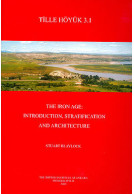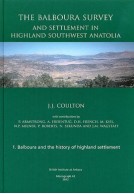People of Anatolia (Hardback)
Past, Current and Future Research in the Biological Anthropology of Türkiye
Imprint: British Institute at Ankara
Series: British Institute at Ankara Monograph
Pages: 231
Illustrations: 26 photos, maps, and charts; 29 tables
ISBN: 9781912090105
Published: 15th May 2024
Script Academic & Professional
Series: British Institute at Ankara Monograph
Pages: 231
Illustrations: 26 photos, maps, and charts; 29 tables
ISBN: 9781912090105
Published: 15th May 2024
Script Academic & Professional
Usually available in 6-8 weeks.
You'll be £45.00 closer to your next £10.00 credit when you purchase People of Anatolia. What's this?
+£4.99 UK Delivery or free UK delivery if order is over £40
(click here for international delivery rates)
Order within the next 3 hours, 42 minutes to get your order processed the next working day!
Need a currency converter? Check XE.com for live rates
(click here for international delivery rates)
Order within the next 3 hours, 42 minutes to get your order processed the next working day!
Need a currency converter? Check XE.com for live rates
People of Anatolia: Past, Current and Future Research in the Biological Anthropology of Türkiye brings together, in one complete volume, some of the current research foci and trends of biological anthropology in Türkiye. The papers within this edited volume cover a multitude of topics, many of which complement and enhance each other, helping to demonstrate the strength and variety of research currently being performed in Türkiye by both domestic and foreign researchers. Furthermore, several of these papers examine large scale diachronic changes and highlight the importance of such holistic approaches and methodological considerations, and new trends in modern research by considering large scale patterns through time and space and the ‘bigger’ picture. For example, the application of multiple, more traditional macroscopic, biological anthropological analyses in conjunction with more modern techniques, such as biomolecular analyses.
Biological anthropology in Türkiye has developed markedly since the days of primarily analysing skeletal and dental morphometrics of the skeleton and investigating race. This is particularly true since the 1990s when studies have examined skeletal remains from Anatolia within wider bioarchaeological contexts and research questions. Research agendas have accelerated particularly in the last decade with the introduction and application of new methodologies, including quantifiable scientific techniques which has increased the ability to not only tackle existing and earlier research questions with more specificity and in more depth, but also enables us to tackle a greater variety of research questions, as well as stimulating new ones.
This volume demonstrates how complementary, as well as large-scale diachronic studies enhance our knowledge not only of changes in human behaviour and human-environment interactions through time, but also how these changes affected people at the individual, population, regional and pan-regional levels. One of the key messages from this edited volume, as a whole, is that multi-faceted and holistic approaches to exploring particular research agendas are both important and essential. While the individual papers in this volume may not necessarily always employ a multi-faceted or holistic approach, the combined reading of them does so. The types of data and information contained in the papers of this edited volume, therefore, will be of great interest and importance to the wider archaeological community in general. But particularly to Turkish students of archaeology, as well as Turkish/Türkiye-based and research focused archaeologists and specialists of biological anthropology and bioarchaeology and its sub-disciplines.
Other titles in the series...
Other titles in British Institute at Ankara...




















